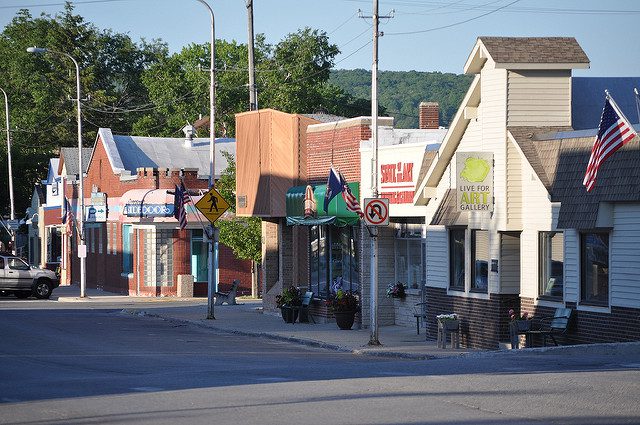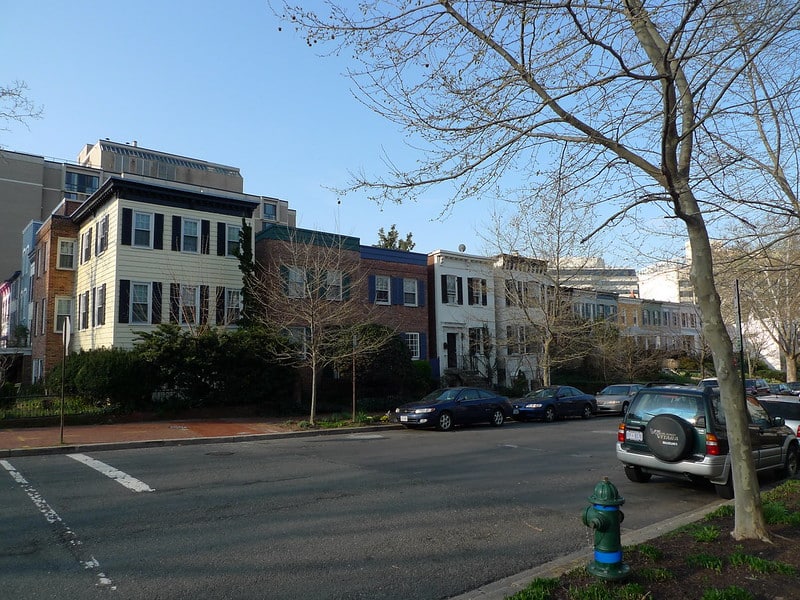
I walk every day on the sidewalks in my town of 1,500 people. Sometimes I’m just walking for recreation, and other times I want to get to the convenience store, post office, or one of several restaurants. It’s more of a bicycle trip to reach the grocery or drug store one mile away, but these destinations are also walkable.
But being a 40-minute drive from the nearest city and an hour from the state capital, my small town surely doesn’t qualify as “urban.” Not by the definition used in the recent Urban Land Institute report, Housing in the Evolving American Suburb, which assumes walkable urbanism takes place mainly in or near the downtown of a major city.
The report further asserts that the dream of walkable urbanism can only be achieved by living in a tiny house or an apartment, given the high price of land and housing in these areas. If a young person or couple wants an affordable single-family home with a yard, they will have to settle for living in a fringe suburban setting, removed from commercial and civic amenities, and even access to sidewalks.
“… ‘Walkable urbanism’ has become somewhat of a luxury good that many households will not be able to afford … for many households the opportunity to walk to stores and restaurants will probably lose out to even higher priorities,” the report states.
I have observed walkable urbanism created out of nothing recently in some semi-rural areas here in Virginia such as Old Trail, a development west of Charlottesville, a metro of about 150,000 people; or in Spotsylvania Courthouse, 12 miles from the city of Fredericksburg. But these new neighborhoods are not really affordable to average working people. I suppose their developers are able to include walkability and a mix of commercial uses because there is significant demand in those locations from middle-class buyers.
But if true affordability can’t be achieved in these from-scratch places, why not build more around towns like mine? Many people who live in my town commute to Charlottesville or Richmond for work and specialty shopping, but their basic needs can still be fulfilled within a very short drive, or even by foot or pedal.
Well, there are at least two big problems with my proposal.
First, we don’t have much infrastructure. An ambulance can barely get through town now on the one through road. We couldn’t handle a significant increase in traffic. Second, people who live here enjoy the tranquil, small-town feel, and why ruin it by attracting urban and suburban refugees? (Pardon the politically charged term, but that’s what is being created with the country’s affordability crisis.)
Some might also object to encouraging growth in rural small towns that are remote from metro areas due to the financial and environmental cost of transportation. Certainly the potential for longer commutes and greater gas usage is something to take seriously.
And as bad infrastructure goes, it should be said that many new exurban, single-family developments run into the same problem of undersized roads and poor access, a problem that only gets remedied after the traffic approaches a standstill.
Unfortunately for my idyllic vision, few people are moving to our town anyway. The town’s flaw (or advantage, depending on one’s point of view) is that it is 8 miles off the Interstate. Most growth is occurring around one of our four Interstate exits, where a town didn’t exist before. But in that location, there is no older, affordable housing stock for young families alongside the new, gleaming apartments and mansion homes. And walkability is minimal.
I guess, given the obvious drawbacks, my little pocket of walkable urbanism will remain isolated, a beacon of hope only to me. But if anyone else wants to try this version of the charmed life, there may be many small towns within reach of urban areas around the country that would be good places to settle.
(Image: Village of Beulah, courtesy of the Michigan Municipal League, CC BY-NC-ND 2.0)





David, I think you may be leaving out an important consideration, which is that at least in much of the country, people are sorting themselves out culturally and politically. When I was getting out of school in Ohio 40 years ago, I thought I would love to live in a town like the one you describe. No such job offers came and I began to see 25 years ago, I would never have fit into such a place except for the few more progressive college towns. So I don’t know about how realistic it is for most urban folk to move to a rural county seat just for the affordable housing. There might just be too much attitude on both sides.
I experienced the same thing working in Danville, IN. The problem there was that even the locals were disinvesting in the town center and the development pressure and focus from housing and schools was to suburbanize even out of this small, wonderful town.
The transportation challenge cannot be overstated — it makes little sense to live in a walkable small town if work is an hour’s drive away and work is in a place where parking (is or should be) highly constrained. The fix is transit or rail, but hey, that’s communism, right?
Eric, that’s a good point about locals’ lack of interest in directing development, whether it’s new housing or schools or anything else, toward a town center. In our community the school locations have been chosen based on wherever the local government could find land and to equalize bus travel times for all students. But no effort is made to locate schools in population centers, because while those centers exist, there are more people scattered around the countryside and therefore the centers don’t have political power. That may change over time.
What do you mean by “undersized roads”? What do you mean by “An ambulance can barely get through town now on the one through road.” What are the lane widths?
Many small towns have abandoned their downtowns. They have gone from thinking of themselves as a town to ‘rural’ and they think anything to do with walkability, even a small main street, is too ‘urban.’ To many, walkability is a big city liberal value and ‘real America’ makes it easy to drive. The worst thing for many small town residents is to be considered urban.
Congratulations on having, seemingly, found a town with balanced living.
It would be interesting to have a review of such things as demographic and economic shifts in the last 20, or so, years. The local paper (I hope one still exists in more than a booster/advertising sheet) coverage of local and state government (and chamber-of-commerce) promotions for economic and residential development and for civic and community enhancements.
Love the small town experience, where people smile, let you go in traffic, hold doors, and are happy. Crime and traffic missing in your life and being able to see the stars when light pollution is gone. Just some of the benefits of being involved, needed, in small-town living.
It can definitely be hard for a small town to properly expand with a huge influx of citizens, so your concerns are warranted. And it probably isn’t even the best solution for their financial problems. Thanks for sharing.